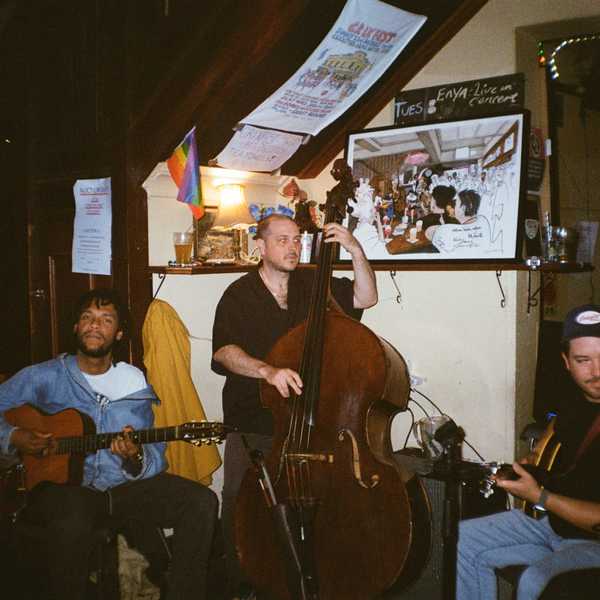Wayne Shorter is 85. It is nice to be able to present his music on FreedomJazzDance while he is alive! On Saturday 6th July I will be presenting a full 2-hour show of his music. Wherever possible I will be playing his compositions. He is a prolific composer, so that won’t be hard. Unfortunately 2 hours is only the start. I already have 8 hours ready to play.
It will depend on your feedback whether I play more.

Interview with Wayne Shorter for Downbeat Magazine (Author: Christopher Richardson)
Wayne Shorter says he doesn’t really believe in beginnings or endings, so let’s just parachute into 1985, when the garrulous jazz sage felt the need to explain himself to an interviewer who couldn’t keep up with his oratorical playtime: “I’m the kind of person who jumps around when he talks because everything is connected.”
That ability to connect the most disparate of dots has helped Shorter become one of the finest composers in the history of American jazz — and when he receives the Kennedy Center Honors on Sunday night, he’ll be recognized for all of that, and then some. Because when you listen to the sweep of his music — whether he made it with Miles Davis, or in Weather Report, or on his own — you can practically hear Shorter’s concept of “everything” growing wide enough to include what lies beyond our perception.
“There are colors we can’t see, but they’re connected to the ones we can,” he says, gesturing toward an open window on a breezy October afternoon in his California living room. “There’s a connection between everything.”
As a conversationalist, Shorter still likes to jump around, but he’s easier to follow than he used to be. At 85, he’s been struggling with respiratory issues, and he doesn’t speak as briskly. But his mind still zips. That much becomes evident the moment he starts talking about “Dolores,” a dashing, venturesome tune he recorded with Davis in 1966. Shorter had once said that writing the song was more like writing DNA — he wasn’t creating the organism, just the code for it to exist.
What an idea. Could he say a little more about it? Sure he could, but what follows isn’t an answer so much as a daisy chain of axioms that seem to have animated his life’s work: “DNA is, like, not to be finished. So I wrote a piece called ‘Dolores,’ right? It’s not finished yet. Ithink beginnings and endings are consensual. There’s no such thing as a short story. .?.?. The DNA, some people say, is the signature — and every composer has a signature. A lot of people don’t know that Beethoven, when he wrote the Fifth Symphony, that second movement” — and here, Shorter begins humming in a happy rasp, then resumes — “He took eight years to figure that out! But to suffer is not right, either. There just has to be something in the music that knocks at the door, that challenges the gatekeepers. Art induces a kind of funniness. Or a tickle, or jingle bells — laughing all the way. .?.?. And without ever giving up. Never giving up: That means playing for a long time? No! [laughs] .?.?. ‘Potential’ is another way of saying ‘mystery.’ ” The Newark Flash
You could almost plot out the vast totality of Shorter’s life as a three-dimensional thing — a multidirectional creative expanse marked with monumental artistic triumphs and fathomless personal tragedies (Shorter lost a daughter, Iska, to a grand mal seizure when she was 14; he later lost a wife, Ana Maria, in the crash of TWA Flight 800). But these days, Shorter’s legacy is secure, and his life appears peaceful and calm. He lives with his wife of nearly 20 years, Carolina, in a house high in the Hollywood Hills, where the maestro awakes each day around 5:30 a.m. to compose on a Nord synthesizer the color of an Atomic Fireball.
He’s always been tenacious with his music. Raised in Newark, N.J., he took up clarinet at 15, and by the time he switched over the saxophone a year later, his skills were surging. But in his mind, Shorter couldn’t improve fast enough. “I knew that people start on instruments when they’re 5 years old, so I did think I had a lot of catching up to do,” he says. “But when things started to move, opportunities came at a pace I hadn’t seen.”
He spent his teenage years playing in groups with his older brother, Alan, and the two proudly carried themselves around Newark as outcasts. Wayne had his nickname, “Mr. Weird,” painted on his saxophone case, and he developed an outsize musical reputation to match. He turned down a tour with Sonny Stitt so that he could graduate from high school in 1951, and while studying music education at New York University and working the clubs of Manhattan and its vicinity, he earned himself a new nickname: the Newark Flash.
After a stint in the Army, he landed a spot in Art Blakey’s Jazz Messengers — a group in which Shorter says he learned to think of musical narrative as an act of collective storytelling. “Art Blakey would sit behind the drum-kit and say, “Tell me that story!,” Shorter says, transporting himself into a nightclub, holding an invisible saxophone in his hands. “So the narrative spreads throughout the group.”
Around that time, Shorter was developing a friendship with John Coltrane, who would eventually bequeath Shorter his place in Miles Davis’s group — a new quintet that would feature drummer Tony Williams, bassist Ron Carter, and Shorter’s soon-to-be best friend, the pianist Herbie Hancock. Almost instantly, the quintet became one of the most elastic and exploratory groups jazz had ever seen.
“The first day I played with Miles, he called me to the Hollywood Bowl,” Shorter says of his high-wire audition. “I walked into the dressing room and Miles said, ‘You know my music?’ I said, ‘Yeah.’ He said, ‘Uh-oh.’ ”
But Shorter managed to ace his onstage tryout, allowing him to spend the next five years alongside the deep and unknowable Davis. Together, they generated some of the most well-known jazz of the 20th century, with Shorter composing many of the group’s sturdiest songs — “E.S.P.,” “Footprints,” “Nefertiti” and others. Up on the bandstand, the players embraced an improvisational approach they called “anti-music” — a refusal to do whatever might be expected of them at any given moment. Reminiscing about it in “Footprints,” an illuminating 2004 biography of Shorter written by Michelle Mercer, Shorter said, “This is what freedom means.”
The quintet dissolved in 1968, but Shorter stuck with Davis long enough to toss a few clean ideas into the psychedelic muck of Davis’s big crossover album, 1970’s “Bitches Brew.” That same year, Shorter co-founded Weather Report, a wildly successful fusion group in which the anti-music veteran converted himself into a sort of anti-bandleader, taking up the role of a benevolent, centering presence rather than the group’s guiding force. Critics complained that Shorter was becoming tentative. He thought he was simply cultivating his own awareness.
The years that followed were Shorter’s starriest, dotted with recording sessions with Steely Dan (1977’s “Aja”), the Rolling Stones (1997’s “Bridges to Babylon”) and JoniMitchell (every album she released between 1977 and 2002). At first, Shorter was leery of being seen as a legitimizer-for-hire, but he ultimately remembers those studio hours as little exercises in empathy — especially when it comes to the delicate magic he made with Mitchell.
“I believe in everyone staying as they are, and when you meld together, you get something more accurate and democratic,” Shorter says, evoking the sanctity of the republic before pivoting to a sci-fi idea: “That’s where the portal is.”
Share "Wayne Shorter – Chronologically-Speaking"
Copy










